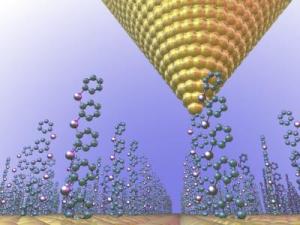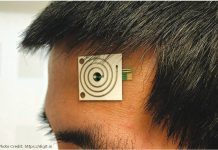
The huge development of the industrial field has seen an important growth these years and all new units are capable to generate heat. The heat has often been treated simple as a waste and nobody wonder if this enormous quantities of heat could be transformed into a source of electric power.
A research team of physicists at the University of Arizona are trying to find new ways to harvest energy through heat.
The waste heat as a form of electric power gives multiple advantages. Using the theoretical model of molecular thermoelectric helps in increasing the efficiency of cars, power plants factories and solar panels, on the other hand efficient thermoelectric materials make ozone-depleting chlorofluorocarbons, or CFCs, outdated.
The head of the research team Charles Staffor is associate professor of physics and he along with his team worked on harvesting energy from waste. He expects that the thermoelectric voltage using their design will be 100 times more than what others have achieved. If the design of the team, which they have made on a computer does work, it will be a dream come true for all those engineers, who wanted to catch and make use of energy lost through waste but do not have the required efficient and economical devices to do so.
Justin Bergfield who is an author and a doctoral candidate in the University of Arizona, College of Optical Sciences in his opinion: “Thermoelectricity can convert heat directly into electric energy in a device with no moving parts. Our colleagues in the field tell us that they are confident that the device we have designed on the computer can be built with the characteristics that we see in our simulations.”
The heat-conversion device invented by Bergfield and Stafford do not require any kind of machines or ozone-depleting chemicals, as was the case with refrigerators and steam turbines, which were earlier used to convert waste into electric energy. Now, the same work is done by sandwiching a rubber-like polymer between two metals, which acts like an electrode. The thermoelectric devices are self-contained, need no moving parts and are easy to manufacture and maintain.
Energy is harvested in many ways using the car and factory waste, which can be used for generating electricity by coating exhaust pipes with a thin material, which is a millionth time of an inch. Physicists also take advantage of the law of quantum physics, which though not used often enough, gives great results when it comes to generating power from the waste.
Molecular thermoelectric devices may help in harvesting energy from the sun and reduce the dependence on photovoltic cells, whose efficiency in harvesting solar energy is going down.
Though having worked on the molecule and thinking about using them for a thermoelectric device, Bergfield and Stafford had not found anything special till an undergraduate discovered that these molecules had special features. A large number of molecules were then sandwiched between electrodes and exposed to a stimulated heat source. The flow of electrons along the molecule was split in two once it encounters a benzene ring, with one flow of electrons following along each arm of the ring.
The benzene ring circuit was designed in such a way that the electron travels longer distance round the rings in one path, which causes the two electrons to be out of phase when they reach the other side of the benzene ring. The waves cancel out each-other on meeting. The interruption caused in the flow of electric charge due to varied temperature builds up voltage between electrodes.
The effects seen on molecules are not unique because any quantum scale device having cancellation of electric charge will show a similar effect if there is a temperature difference. With the increase in temperature difference, energy generated also increases.
Thermoelectric devices designed by Bergfield and Stafford can generate power that can lit a 100 Watt bulb or increase car’s efficiency by 25%.



